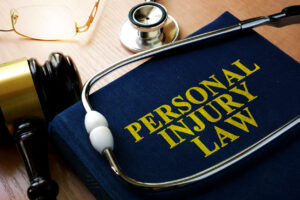
When it comes to navigating the complexities of personal injury law in St. Louis, MO, understanding the basics of personal injury claims is essential.
Whether you’ve been involved in a car accident, suffered a slip and fall, or experienced any other form of injury due to someone else’s negligence, knowing your rights and the steps to take can make a significant difference in the outcome of your case.
This article aims to shed light on key aspects of personal injury law in St. Louis, MO, offering insights that could help you navigate through these challenging times.
1. What Constitutes a Personal Injury Claim?
Personal injury law covers a wide range of incidents, from auto accidents and workplace injuries to medical malpractice and product liability. At its core, a personal injury claim in St. Louis, MO, revolves around two main elements: liability and damages. Liability involves proving that another party’s negligence or intentional action caused your injury. Damages refer to the physical, emotional, and financial impact of your injury. To succeed, you must demonstrate both elements convincingly.
2. Missouri’s Comparative Fault System
Missouri operates under a pure comparative fault system, which means that if you’re partially at fault for the incident that led to your injuries, your compensation will be reduced by your percentage of fault. This system underscores the importance of thorough investigation and strong legal representation to minimize your fault and maximize your recovery.
3. Statute of Limitations
In Missouri, personal injury victims have a limited window to file a lawsuit. The statute of limitations for most personal injury cases is five years from the date of the injury. Failing to file within this period typically results in the loss of your right to seek compensation. However, exceptions exist, such as for medical malpractice claims, which have a different timeline. Early consultation with a personal injury attorney can help ensure you adhere to these critical deadlines.
4. Seeking Medical Attention and Documentation
Immediate and thorough medical treatment is not only vital for your health but also for your personal injury claim. Medical records serve as crucial evidence in demonstrating the extent of your injuries and their impact on your life. Additionally, documenting the scene of the incident, your injuries, and any property damage can strengthen your case.
5. Settlements vs. Trial
Most personal injury claims in St. Louis, MO, are resolved through settlements without going to trial. Settlements offer a quicker resolution and guaranteed compensation but require negotiation skills to ensure a fair offer. If a settlement cannot be reached, your case may go to trial, where a judge or jury will decide the outcome. An experienced personal injury lawyer can advise you on the best course of action, whether negotiating a settlement or representing you at trial.
Conclusion
Navigating the complexities of personal injury law in St. Louis, MO, can be daunting, but you don’t have to do it alone. Understanding the basics of personal injury claims, from the importance of proving liability and damages to knowing the statutory deadlines, is crucial. If you or a loved one has been injured due to someone else’s negligence, seeking the advice and representation of a knowledgeable personal injury attorney can make all the difference in achieving a favorable outcome.
Remember, each personal injury case is unique, and the legal landscape is continually evolving. Staying informed and seeking professional guidance can help protect your rights and ensure you receive the compensation you deserve for your injuries and losses.
If you have any questions about a personal injury matter, please feel free to reach out to Sansone & Lauber at 314-863-0500.




 Site by Consultwebs.com: Law Firm Website Designers/Personal Injury Lawyer Marketing.
Site by Consultwebs.com: Law Firm Website Designers/Personal Injury Lawyer Marketing.